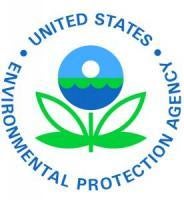Today, the U.S. Environmental Protection Agency (EPA) is adding five hazardous waste sites that pose risks to human health and the environment to the National Priorities List (NPL) of Superfund sites. In addition, the agency is proposing to add three additional sites to the list. The Superfund program, a federal program established by Congress in 1980, investigates and cleans up the most complex, uncontrolled or abandoned hazardous waste sites in the country and converts them into productive local resources by eliminating or reducing health risks and environmental contamination associated with hazardous waste sites.
“Cleaning up hazardous waste sites protects our country’s most vulnerable populations, prevents diseases, increases local property values and facilitates economic restoration of communities across America,” said Mathy Stanislaus, assistant administrator for the Office of Solid Waste and Emergency Response. “By listing a site on the Superfund National Priorities List, we’re taking an important action to protect human health and encourage economic restoration of communities.”
Recent academic research, from the study Superfund Cleanups and Infant Health, demonstrated that investment in Superfund cleanups reduces the incidence of congenital abnormalities for those living within 5,000 meters (or 5,468 yards) of a site. Another study conducted by researchers at Duke and Pittsburgh Universities, concluded that making a site final on the NPL may increase housing prices by signaling that a site has been placed on the path towards remediation. Furthermore, the study found that once a site has all cleanup remedies in place, nearby properties have a significant increase in property values as compared to pre-NPL proposal values.
The following five sites have been added to the NPL:
-
· Indiana - North Shore Drive (ground water plume) in Elkhart, Ind.;
· Louisiana - Delta Shipyard (former boat cleaning and repair) in Houma, La.;
· New Jersey - Pierson’s Creek (chemical manufacturer) in Newark, N.J.;
· Pennsylvania - Baghurst Drive (ground water plume) in Harleysville, Pa.; and
· Vermont - Jard Company, Inc. (former capacitor manufacturer) in Bennington, Vt.
The following three sites have been proposed for addition to the NPL:
-
· Alabama - 35th Avenue (residential soil contamination) in Birmingham, Ala.;
· Indiana - Kokomo Contaminated Ground Water Plume (ground water plume) in Kokomo, Ind.; and
· Michigan - DSC McLouth Steel Gibraltar Plant (steel finishing operation) in Gibraltar, Mich.
The sites announced today have characteristics and conditions that vary in terms of size, complexity and when the contamination occurred, with some sites involving recent contamination, among other factors. But as with all NPL sites, EPA first works to identify companies or people responsible for the contamination at a site, and requires them to conduct or pay for the cleanup. For the newly listed sites without viable potentially responsible parties, EPA will investigate the full extent of the contamination before starting substantial cleanup at the site.
Past and current site uses include lead smelting, solvent handling, small capacitor and motor manufacturing, and maritime-related activities. Site contaminants are numerous with lead, arsenic and other metals; polychlorinated biphenyls (PCBs); and volatile organic compounds such as trichloroethylene (TCE), as well as others. Contamination affects residential yards, wetlands, surface water and groundwater, and soil.
For example, EPA added the Jard Company Inc. to the NPL. Polychlorinated biphenyls (PCBs), used in the manufacturing process, were released into the former building structure and soils on the property which contaminated area groundwater. At the Delta Shipyard site, heavy metals and other hazardous wastes were released from disposal ponds which contaminated area soils, groundwater and surface waters. Without NPL site listing and cleanup, contamination would continue to pose a risk to human health and the environment.
The Superfund program uses remedy effectiveness information to actively manage site operations and refine remedial strategies in order to efficiently move sites to completion. Today, more than 800 Superfund sites across the nation support some type of continued use, active reuse or planned reuse activities.
The Comprehensive Environmental Response, Compensation and Liability Act (CERCLA), the law establishing the Superfund program, gives EPA the authority to clean up releases of hazardous substances and directs EPA to update the NPL at least annually to protect human health and the environment with the goal of returning these sites to communities for productive use. The NPL contains the nation’s most serious uncontrolled or abandoned hazardous waste sites. The list serves as the basis for prioritizing both enforcement actions and long-term EPA Superfund cleanup funding; only sites on the NPL are eligible for such funding.
Federal Register notices and supporting documents for the final and proposed sites:
http://www.epa.gov/superfund/sites/npl/current.htm
Information about how a site is listed on the NPL:
http://www.epa.gov/superfund/sites/npl/npl_hrs.htm
Superfund sites in local communities:
http://www.epa.gov/superfund/sites/index.htm
More information about the Comprehensive Environmental Response, Compensation and Liability Act (CERCLA), the law establishing the Superfund program, can be found at:
http://epa.gov/superfund/policy/cercla.htm




 />i
/>i
